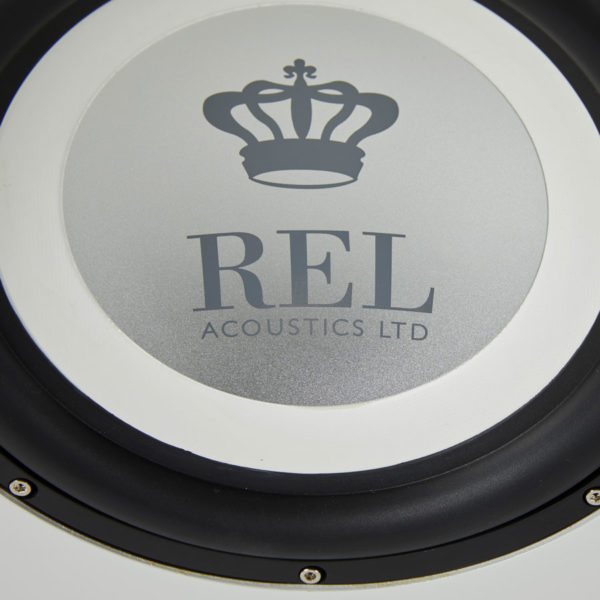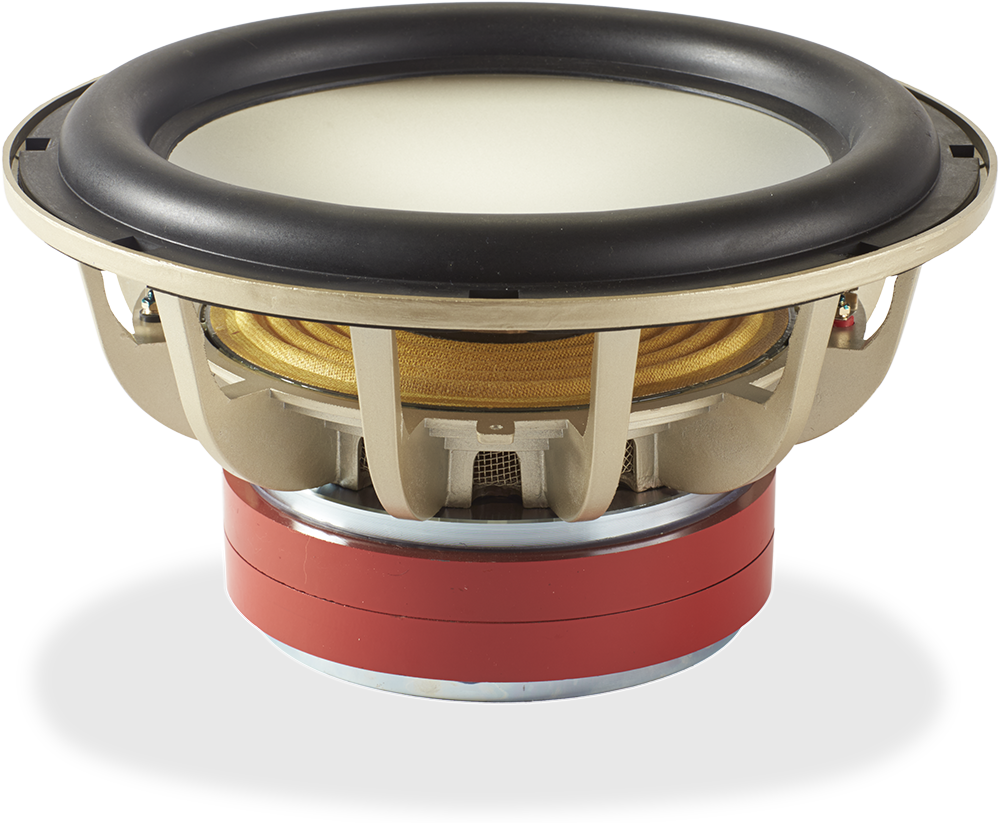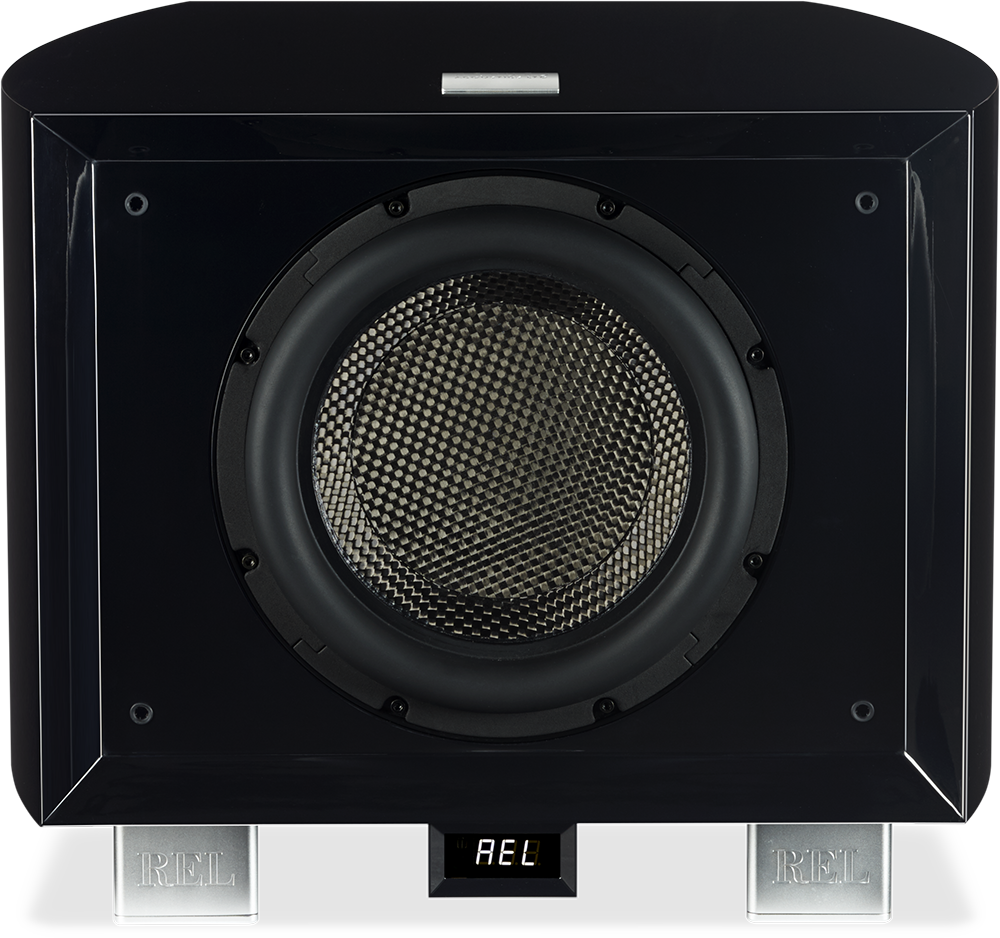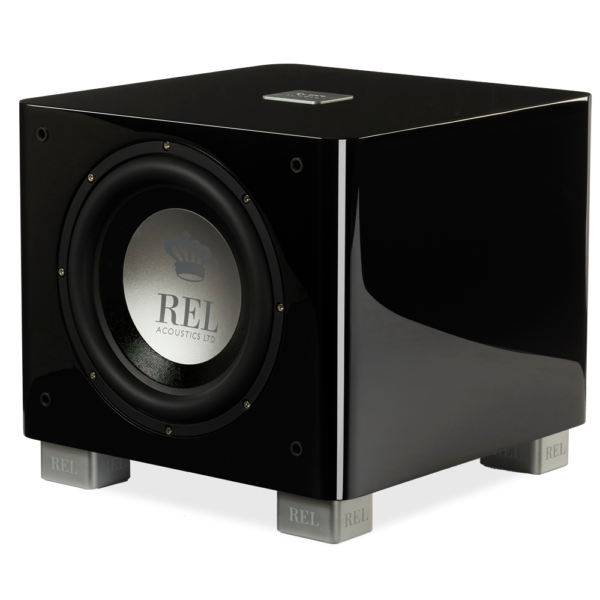Blog
Materially Superior
Not All Cones Are Created Equal
The great race car designer, Colin Chapman of Lotus was once quoted as saying “To go faster, first add lightness.” Words to live by.
Before we jump into the materials used in REL’s cones, let’s take a step back and ask ourselves why ANY cone material is important and what the point of using high tech materials might be. After all, plenty of materials have been used down through the years, what are smart engineers after?
In a word “speed”, or rather, speed with quietness and stiffness. And why is speed so important to REL? Because without it, we cannot possibly keep up with state of the art loudspeakers. Where other subwoofer manufacturers need only to make bass, and lots of loud, bombastic bass—however slow—is guaranteed to impress neophytes. For the REL customer, the 16 year -old within finds themselves unimpressed over time as their tastes evolve and they begin to realize that the system that once sounded great now sounds unfulfilling. That evolution is normal, REL’s are not for everyone, we all evolve or life is not terribly satisfying.

Let’s begin with Paper, the Ancient Miracle:
For over 100 years, the first/best material for speaker cones has been paper. Why? Because it possesses an almost magical ability to get it perfectly right by being a little bit wrong. A perfect cone is both infinitely stiff in bending mode, while perfectly quiet and well damped in radial propagation—meaning that ongoing echoes within a cone quietly rippling along its surface just after a major sonic event, are immediately damped. This ideal behavior never occurs in the real world, rather like asking your teenage son or daughter to shut off their cell phones and them complying immediately. But I digress. Paper, does almost everything well but nothing completely perfectly and results in affordable, balanced designs.
While conducting trainings for salespeople in stores, I used to state that if paper were invented today it would be immediately hailed as the magical material for the ages. But now, we all yawn and think, “Paper? High tech? Whatever.” Yes, but if I were to tell you, there was an amazing new material—we have yet to think of a name for it—that has the ability to be laid up in all sorts of multi-density constructs, that is comprised of all sorts of high tech and, lately, natural fibres and, when cold drawn and allowed to air dry has all manner of beneficial sonic characteristics you might be a little more interested. Acoustic engineers certainly are.
Today, natural roots like kapok are used by some, burnt wood chunks are used by others to stiffen and break up resonant modes rippling along a paper cone’s surface, all while keeping weight close to a minimum and stiffness quite decent. Ultimately, the forces present in big truly state of the art subs mean that a paper cone, actually able to deal with these forces, is too heavy. But for very good performance at reasonable prices, paper is hard to beat. We use a composite of air dried white paper cones, stiffened by an aluminium substantial–(in diameter) but–lightweight center cap. This is the balance of virtues that we blend into our FibreAlloy™ drivers in T/x.
Insider Tip:
Our paper cones are white because they are lighter than black cones. To make the cone look “good” –i.e. black– a large amount of carbon black is added to the water-based slurry that all paper cones originate within. We listened closely and opted for more expensive white cones because they sound better; quicker, deeper, richer. Why? Because they weigh less without the carbon black.
 Stepping up in Price and Performance, Aluminium:
Stepping up in Price and Performance, Aluminium:
Aerospace aluminium is a fantastic cone material but has one challenge—because of its high stiffness and light weight, it rings like a bell, especially in the upper midrange frequencies. This ringing can impart a sense of thinness, and lacking in body—not qualities anyone wants associated with our subwoofers. The solution is to design a continuous cast one-piece cone that has a special composite disc attached to the center of the cone that does double duty; it is used to damp the cone and also acts as an attachment hub for the voice coil former to connect to the cone—the voice coil is what converts amplifier energy driving the musical signal into pistonic movement of the driver. Tap on the surface of a Serie S cone with a fingertip and you will hear an incredibly quiet sonic return. By employing this clever part we quiet down the inherent ringing of a hemispherical bowl—the cone– and damp those pesky ringing tones that would normally exist. This is the method we use for our near-reference drivers in Serie S and it results in powerful, very fast drivers capable of going extremely low.
Insider Tip:
Did you know that one of the Serie S’s secrets is we limit the cone thickness to just .5mm? Listening to cones just a few tenths of a mm thicker and all the clarity and leading edge snap goes away, replaced by heavy, dull sounding thumps.
Carbon Fibre , The Modern Miracle (When Cost is Not of Issue):

Carbon fibre is used for race car tubs (modern race cars no longer use chassis and bodies, due to carbon fibre’s incredible strength, the entire tub—the outside form of the race car and the entire interior is all laid up as one 3-dimensional whole), prominent in the Stealth fighter and is finding its way into virtually every high tech production where high strength and low mass need to coexist. Expensive, tricky to work with (it must be kept cryogenically frozen until just before being formed or it loses noticeable amounts of its special values), it is the most remarkable of all the modern fibres for its sonic naturalness. Where Kevlar tends to sound sharp, hard and peaky, carbon fibre sounds rich, natural and balanced.
Which is why we employ this in our Reference Designs. Costly? Yes, but the benefits of having a 15” driver such as we use in our flagship No.25 whose moving bits weigh 60% less than a high end 10” driver we used just a few years ago is remarkable. The forces acting upon a 15” driver moving 4” throughout its full stroke are simply incredible. We literally could not produce the performance envelope this amazing driver delivers without the miraculous properties of carbon fibre. In the G-1 MKII driver, because we better understood what carbon fibre could do after working with it for 5 years, we were able to coax twice as much output as its predecessor, the MKI, by carefully balancing the dynamic forces acting within the driver. Imagine doubling the output power of your amplifier simply because the engineers better understood the molecular limits of the output transistors. This is what we accomplished with our most recent carbon fibre Reference drivers. Remarkable, not inexpensive, but utterly remarkable.
Insider Tip:
4 months of development went into designing and testing the internal lead-in wires of the No.25 and G-1 MKII so that they would remain attached for years to come. The problem? The cones were capable of accelerating so blindingly fast that it would literally leave the wires behind in space. Do it long enough and they could remain permanently behind. We evolved a lacing scheme that easily permits the full 4” stroke of these drivers to be achieved with no binding or limiting of free movement. And they don’t come off after enduring the equivalent of 1,000 Saturn Mk V launches.
We hope you better understand our process; speed which is so critical to the natural believability of music is the result of carefully evolving specific combinations of materials all intent on delivering the utmost, yet tailored to the very real limits of our customer’s budgets. We approach the design of our least expensive models using the same engineering team, with the same goals and intensity of purpose as our Reference models, tailoring our selection of materials to deliver as much as possible within the limits imposed by modern material science.










